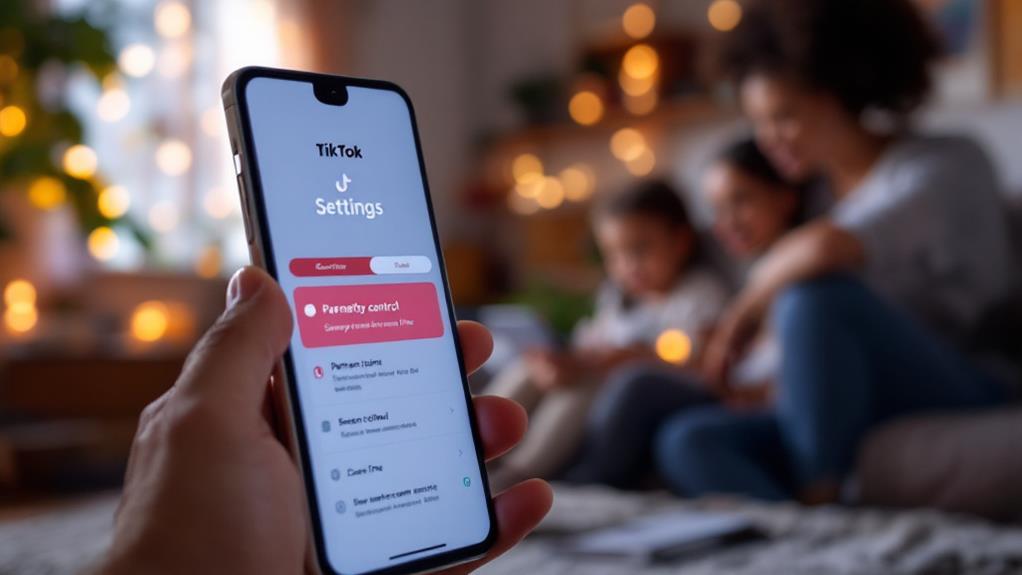In today's digital landscape, parental control software is essential for securing children's online experiences. Aura offers an integrated solution with identity protection, antivirus, and VPN services, tailoring content blocking to family needs. Net Nanny stands out with intelligent filtering and geofencing, managing up to 20 devices. Qustodio provides a user-friendly interface, though it may need caution against VPN circumvention. Mobicip supports multiple browsers with real-time alerts, emphasizing screen-time management. Google Family Link, a free option within the Google ecosystem, excels in app management but has limited web filtering. Explore further to understand the best choice for your family's needs.
Key Takeaways
- Aura offers comprehensive parental controls, identity protection, and cyberbullying prevention, ensuring safe internet browsing for families.
- Net Nanny provides adaptive content filtering and real-time alerts, making it an effective, cost-friendly choice for managing multiple devices.
- Qustodio's free version includes essential controls, while the premium plan enhances safety with real-time tracking and geofencing.
- Mobicip offers customizable filtering and screen-time management, though it lacks two-factor authentication and certain app blocking capabilities.
- Google Family Link is a no-cost solution providing screen time and app management, ideal for those within the Google ecosystem.
Aura
Aura emerges as a multifaceted solution in the domain of parental control software, integrating multiple layers of online protection to safeguard families. By seamlessly combining parental controls with identity protection, antivirus, and VPN services, Aura offers an all-encompassing approach to online safety.
One of the standout features of Aura is its proactive cyberbullying prevention capability. The app alerts parents to potential cyberbullying incidents, empowering them to take timely action. This feature, coupled with the ability to block unwelcome content, guarantees that children's online interactions remain secure and positive.
Moreover, Aura excels in screen time management, providing parents with detailed analytics to monitor and regulate their children's device usage. This functionality allows parents to set appropriate limits and encourages healthier digital habits.
Aura's user-friendly interface guarantees that these features are accessible to all users, regardless of technical proficiency, streamlining the setup and navigation processes.
Additionally, Aura's content-blocking options are customizable, enabling families to tailor settings according to their unique needs and values. This adaptability guarantees that Aura not only promotes online safety but also aligns with the specific requirements of each household, making it a versatile tool for modern digital parenting.
Net Nanny
Net Nanny stands out as a robust parental control software solution, adeptly catering to the needs of larger families with its capability to manage up to 20 devices across multiple platforms. This scalability is instrumental for households seeking thorough oversight of diverse digital environments.
The platform's intelligent content filtering, a notable Net Nanny feature, adapts dynamically to users' browsing habits, ensuring an evolving layer of protection. Real-time alerts and detailed internet activity reports further empower parents with timely information, enhancing their ability to safeguard online interactions.
Location tracking is another significant Net Nanny benefit, offering parents an additional tool for monitoring their children's safety through geofencing options. While the geofencing capabilities are somewhat limited, they provide a foundational level of security for geographically sensitive circumstances.
Despite occasional app crashes, Net Nanny remains user-friendly, streamlining navigation and configuration for all users, from tech-savvy to novice.
Priced starting at approximately $50 per year, Net Nanny presents a cost-effective solution, integrating extensive parental control features into one package. This affordability, combined with its feature-rich offerings, positions Net Nanny as a compelling choice for families prioritizing online safety and digital well-being in today's interconnected world.
Qustodio
While Net Nanny offers robust solutions for larger families, Qustodio presents a versatile alternative that caters to both budget-conscious and tech-savvy parents. One of the standout Qustodio features is its thorough free version, which includes app blocking, screen time limits, and activity reports, allowing parents to monitor a single device effectively.
For those requiring more extensive monitoring, the premium plan, priced at $54.95 annually, supports up to five devices and offers enhanced functionalities such as detailed activity breakdowns and alerts for specific site visits. This tiered approach makes Qustodio an attractive option for varying family needs.
Qustodio's intuitive interface distinguishes itself by providing an accessible user experience, enabling even non-tech-savvy parents to navigate and customize settings with ease. Additionally, real-time location tracking and geofencing are notable Qustodio features that allow parents to establish safe zones, enhancing the safety of their children's digital and physical environments.
However, a significant Qustodio limitation is its vulnerability to circumvention via VPNs, which can be exploited by tech-savvy children to bypass restrictions. Despite this, the combination of robust free offerings and advanced premium features positions Qustodio as a compelling parental control solution for diverse family dynamics.
Mobicip
Mobicip consistently emerges as a formidable parental control app, adeptly supporting multiple browsers and providing real-time alerts to effectively monitor children's online activities. Its design guarantees a seamless user experience, allowing parents to swiftly access essential tools and settings.
Among the most notable Mobicip features is the ability to tailor content filtering based on a child's age and maturity, offering strict, moderate, mature, or monitor-only modes.
In addition to content filtering, Mobicip supports location tracking and screen-time management, enhancing its utility for parents seeking thorough control over their children's digital interactions.
However, it is worth noting that Mobicip lacks two-factor authentication and certain app blocking capabilities, potentially limiting its robustness in some contexts. This gap in functionalities necessitates a cautious approach, especially in households with tech-savvy children who might circumvent less stringent restrictions.
Mobicip pricing is strategically positioned to appeal to families, starting at approximately $48 per year for five devices. This affordability guarantees that families can access essential online safety features without incurring prohibitive costs.
Google Family Link
For those vested in safeguarding their children's digital experiences, Google Family Link offers a no-cost solution that integrates seamlessly with the Google ecosystem.
As a thorough parental control app, it facilitates effective screen time management and app management, ensuring a controlled digital environment for minors. Significantly, the application imposes no restrictions on the number of accounts or devices managed, making it a flexible option for families.
Key features of Google Family Link include:
- Screen Time Limits: Establishes boundaries on device usage, promoting healthy digital habits.
- App Management: Enables parents to approve, block, or disable specific applications, tailoring the digital experience to individual needs.
- Activity Monitoring: Provides detailed insights into app activity and usage time, helping parents make informed decisions.
- Location Tracking: Allows parents to track their child's location via their device, although it lacks advanced geofencing.
- Compatibility: Works seamlessly with Android devices and Chromebooks, optimizing usability for Google-centric households.
While Google Family Link offers limited web content filtering, it empowers parents to manually disable access to inappropriate apps and websites, enhancing browsing safety.
The app's integration within the Google ecosystem and its robust yet straightforward features make it an attractive option for parents seeking effective digital oversight.
Frequently Asked Questions
Which Web Browser Has Best Parental Controls?
Microsoft Edge stands out regarding browser features and control ease, offering extensive built-in parental controls through Microsoft Family Safety. Its ability to filter websites, set screen time limits, and monitor activity is unmatched among browsers.
What Are Parental Controls for Internet Safety?
Parental controls are essential tools for internet safety, providing child protection by monitoring and restricting online activities. Key features include web filtering, screen time management, and location tracking, addressing risks like cyberbullying and exposure to harmful content.
Which Internet Provider Has the Best Parental Controls?
Analyzing internet provider features reveals Xfinity's xFi app as superior for parental control comparisons, offering extensive options like pausing internet access and content filtering, surpassing Verizon Fios, AT&T, Spectrum, and CenturyLink in functionality and ease of use.
Is Anything Better Than Bark?
Exploring Bark alternatives reveals options with varied features. Qustodio offers free device monitoring; Norton Family excels in filtering; Aura enhances safety with cyber alerts; Mobicip offers customization; Google Family Link is cost-effective but less feature-rich.
Conclusion
The evaluation of parental control software reveals critical tools for ensuring safe internet browsing for minors. Aura, Net Nanny, Qustodio, Mobicip, and Google Family Link each offer unique features catering to diverse user needs. The effectiveness of these solutions lies in their ability to filter content, monitor usage, and enforce time restrictions while maintaining ease of use. Selecting the appropriate software requires careful consideration of individual requirements, ensuring a balance between robust security measures and user-friendly interfaces to optimize digital safety.




